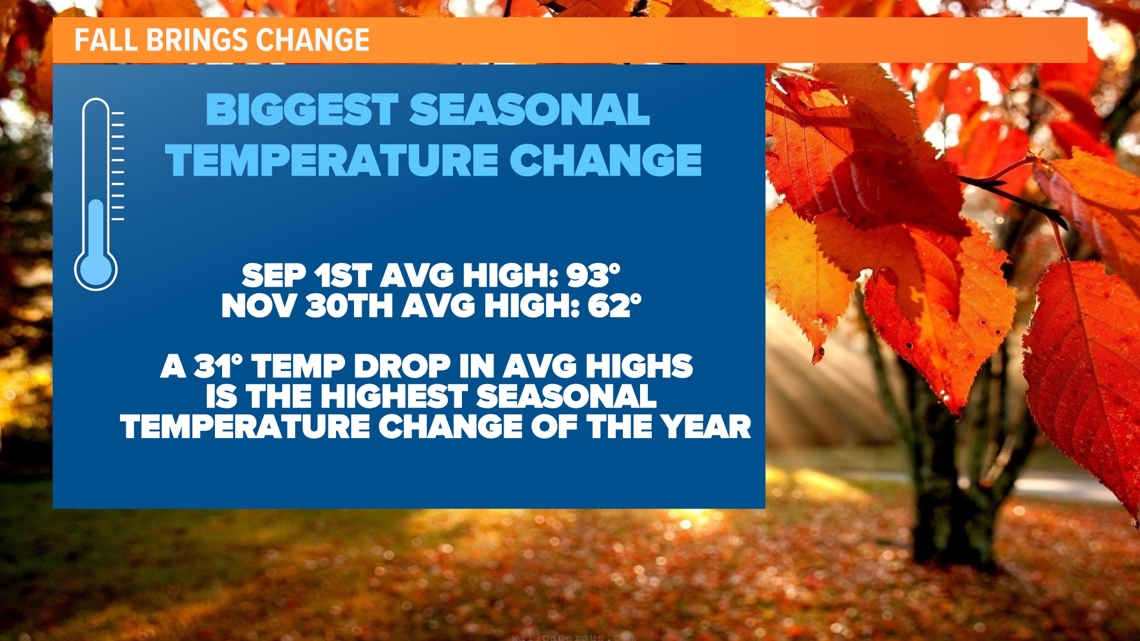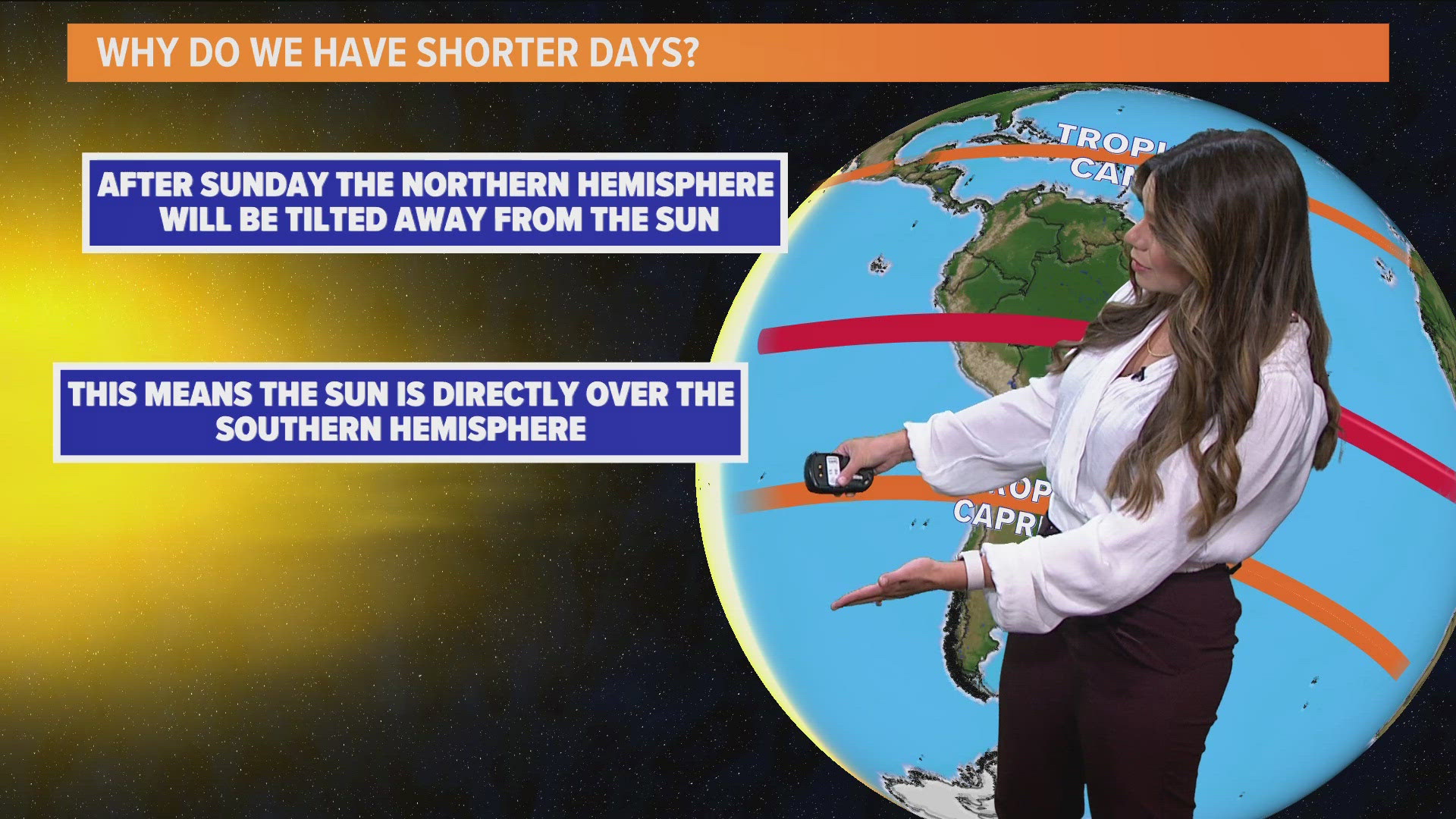DALLAS — Officially, there are just under a few days of summer left and it'll sure feel like it — the autumn equinox happens at 7:43 a.m. on Sunday, Sept. 22, kicking off the official start of fall.

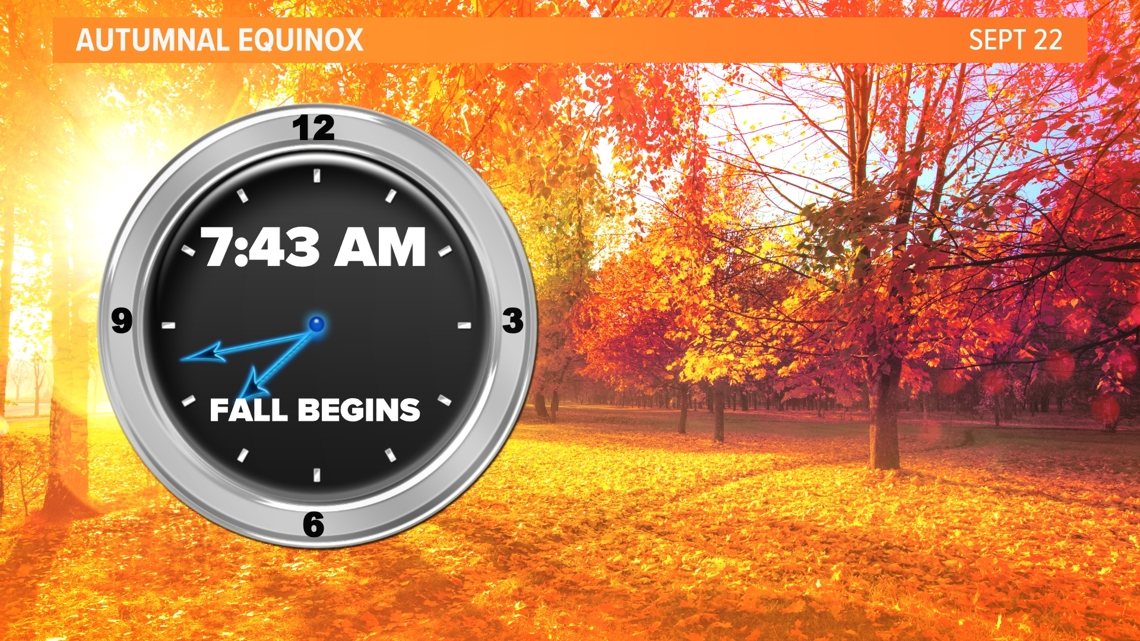
The fall equinox, also known as the autumnal equinox, marks the official start of fall in the Northern Hemisphere. It typically occurs around September 22 or 23, when the sun is positioned directly over the equator. On this day, day and night are nearly equal in length. The name equinox is derived from the Latin words "aequus" (equal) and "nox" (night). For DFW, September 26 is when we see equal parts day and night.

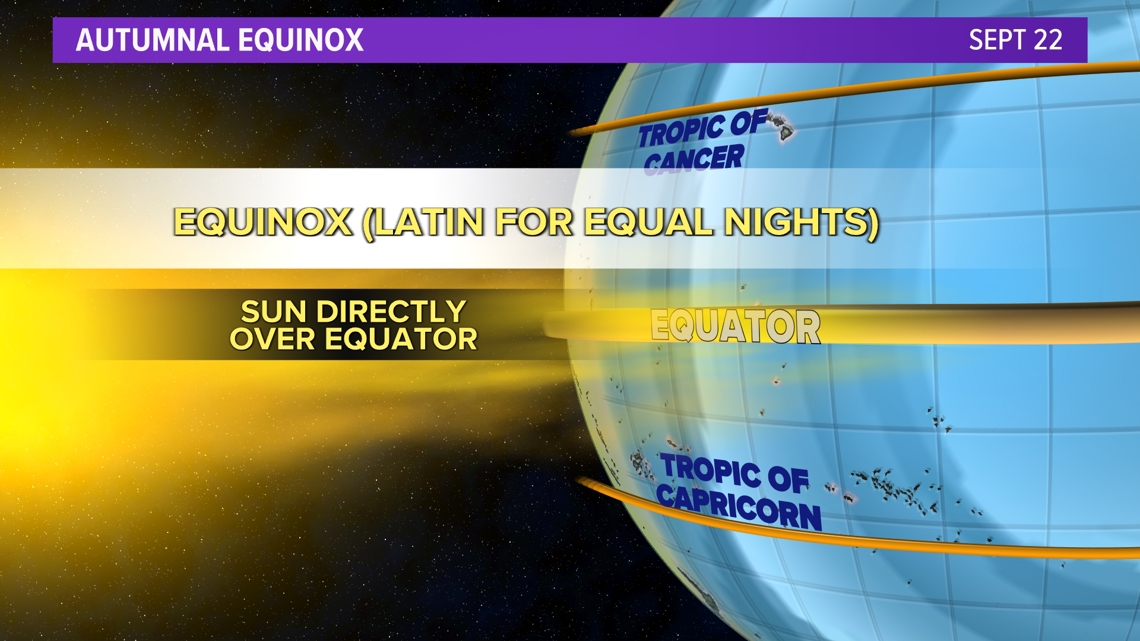
As the Earth continues its orbit around the Sun, the Northern Hemisphere begins to tilt away, leading to shorter days and cooler temperatures. This shift signals the transition from the warmth of summer to the cooler, crisper weather of fall. The opposite is true for the Southern Hemisphere, where they prepare for longer days and hotter temperatures.
DFW specifically loses about 131 minutes of daylight between now and the winter solstice (shortest day of the year), December 21st.

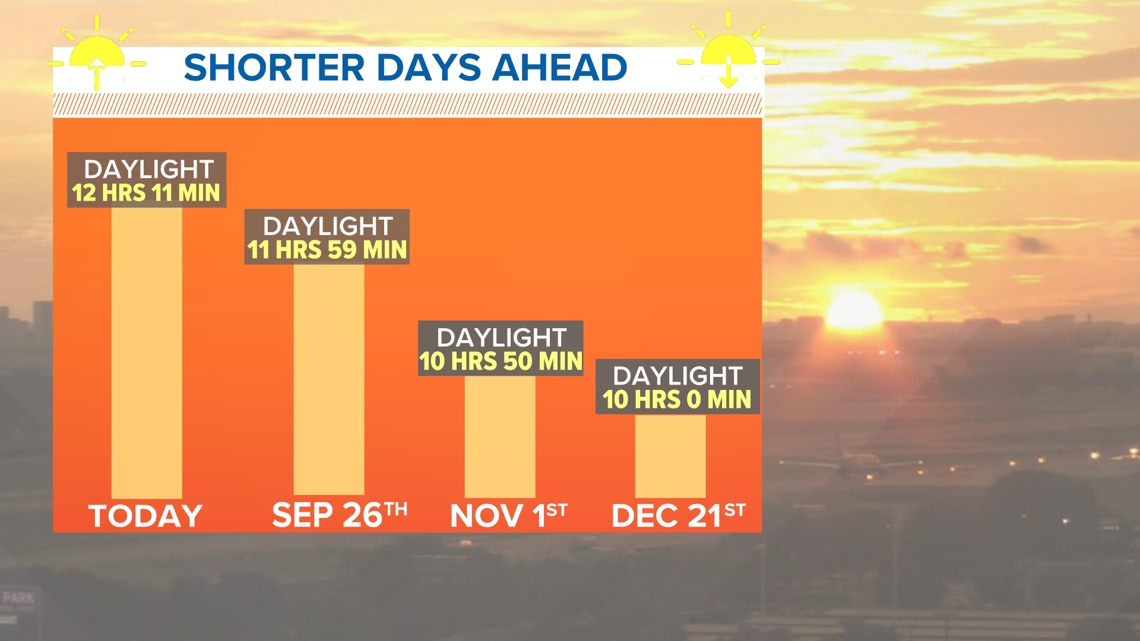
For North Texans, the fall equinox might not bring an immediate cool-down, but it sets the stage for relief from the oppressive summer heat. Over the next few weeks, you'll start to notice the gradual drop in temperatures and perhaps even the first signs of fall foliage. Shorter days mean less daylight and this cues plants to stop or slow photosynthesis. The lack of chlorophyll brings the plant's natural colors out - reds, oranges, and yellows.
Fall is also the second wettest season of the year. On average, the fall months accumulate just over nine and a half inches of rainfall. Fall is when North Texas sees the biggest drop in average high temperatures. On September 1st, the average high is 93° and on November 30th the average high is 62°. That is a 31-degree average high-temperature change!

